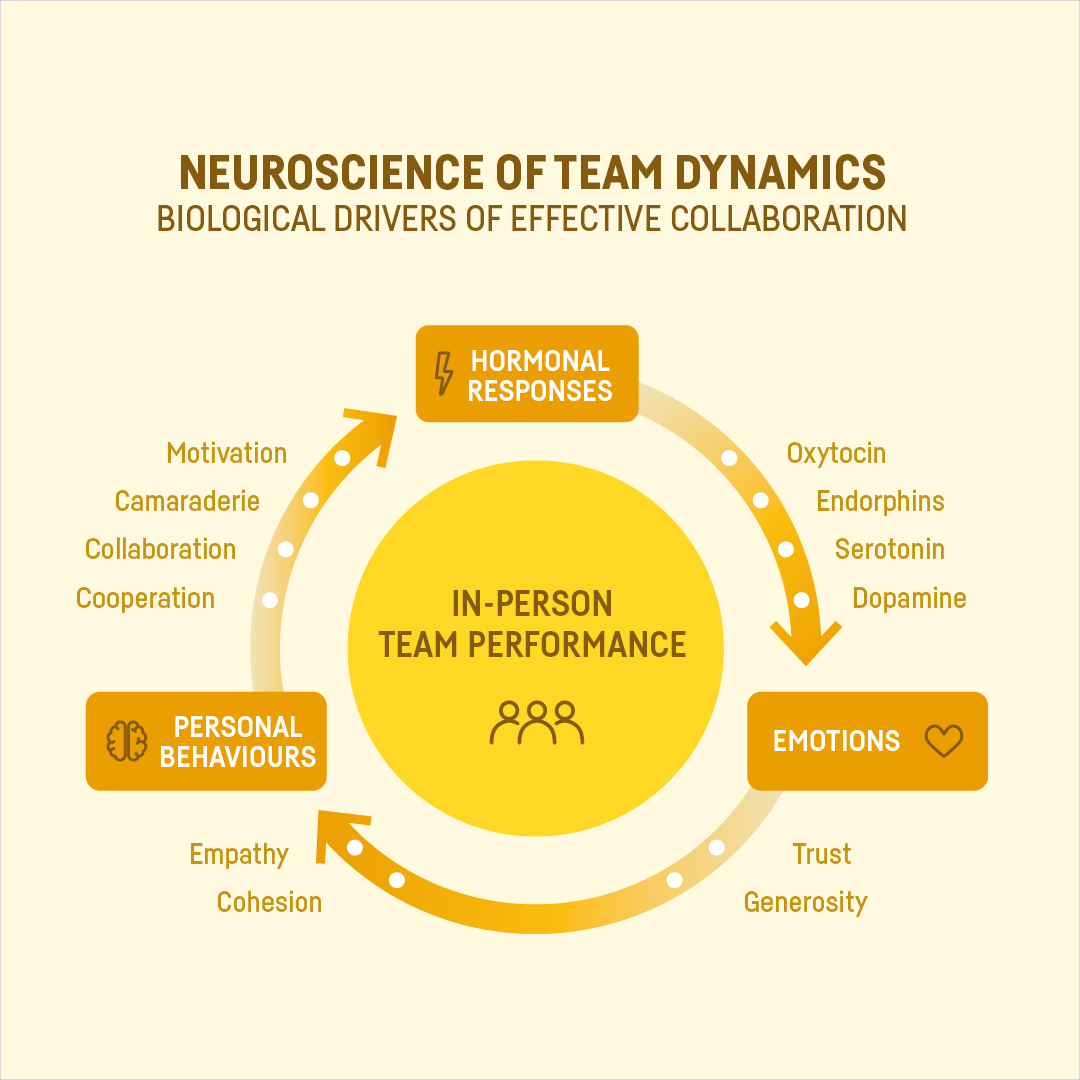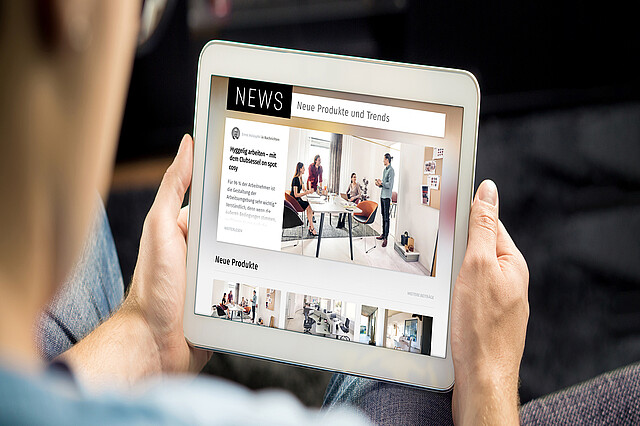Neurobiology of team dynamics: why we grow as a team

Scientific studies show that the way we collaborate is influenced by biological processes. There are three important factors which play a role here:
Hormonal reactions: Hormones such asoxytocin, endorphins, serotonin and dopamine promote positive feelings and contributetotrust and motivation. Theyarethebiological “glue” thatholdsteamstogether.
Feelings: Trust and generosityarecrucialtocreatingsuccessfulteams in thelongterm. An atmosphereoftrustenables emotional security and improvesworkperformance.
Personal behaviour: Collaboration is not only based on individual performance, but also on empathy, cohesion and camaraderie. These factors strengthen motivation and the willingness to cooperate.
The dynamic of “personal behaviour” → “hormonal reactions” → “feelings” creates a cycle that optimises personal team performance. Teams that consciously integrate feelings and behaviour into their culture experience more cohesion and better results.
Screen or face-to-face interaction? - Two sides of the coin

Digitalisation offers many opportunities to connect teams, but not all interaction can be replaced by screens. Both forms of collaboration - digital and physical - have their advantages and disadvantages:
Advantages of digital collaboration
Coordination: Digital meetings enable quick and efficient coordination.
Unlimited accessibility: teams can work from anywhere.
Flexibility and scalability: Remote working offers individual customisation options and is particularly advantageous for global teams.
Disadvantages of digital collaboration
Isolation: A lack of personal contact can lead to social alienation.
Less cohesion: Virtual meetings are often less emotional and hardly promote empathy.
Limited interpersonal skills: The personal “connection” with colleagues often falls by the wayside.
Advantages of working together in person

Trust and context: Physical meetings create trust and are rich in context - you experience facial expressions, gestures and multi-sensory impressions.
Professional development: Face-to-face interaction promotes learning, feedback and development.
Improved communication: Interpersonal relationships are easier to maintain and deepen.
Disadvantages of personal collaboration
Stressful office dynamics: The physical workplace can cause distraction and stress.
Commute: In-person presence often means more time spent traveling.
Work-life balance: Personal commitments and professional demands need to be more balanced.
A hybrid model: the best of both worlds

A hybrid model: the best of both worlds
The solution lies in a hybrid way of working that combines the best of both worlds:
Efficiency of the digital world: flexible, location-independent collaboration keeps the team productive and accessible.
Strength of face-to-face interaction: regular physical meetings promote trust, communication and team spirit.
social media channels:


